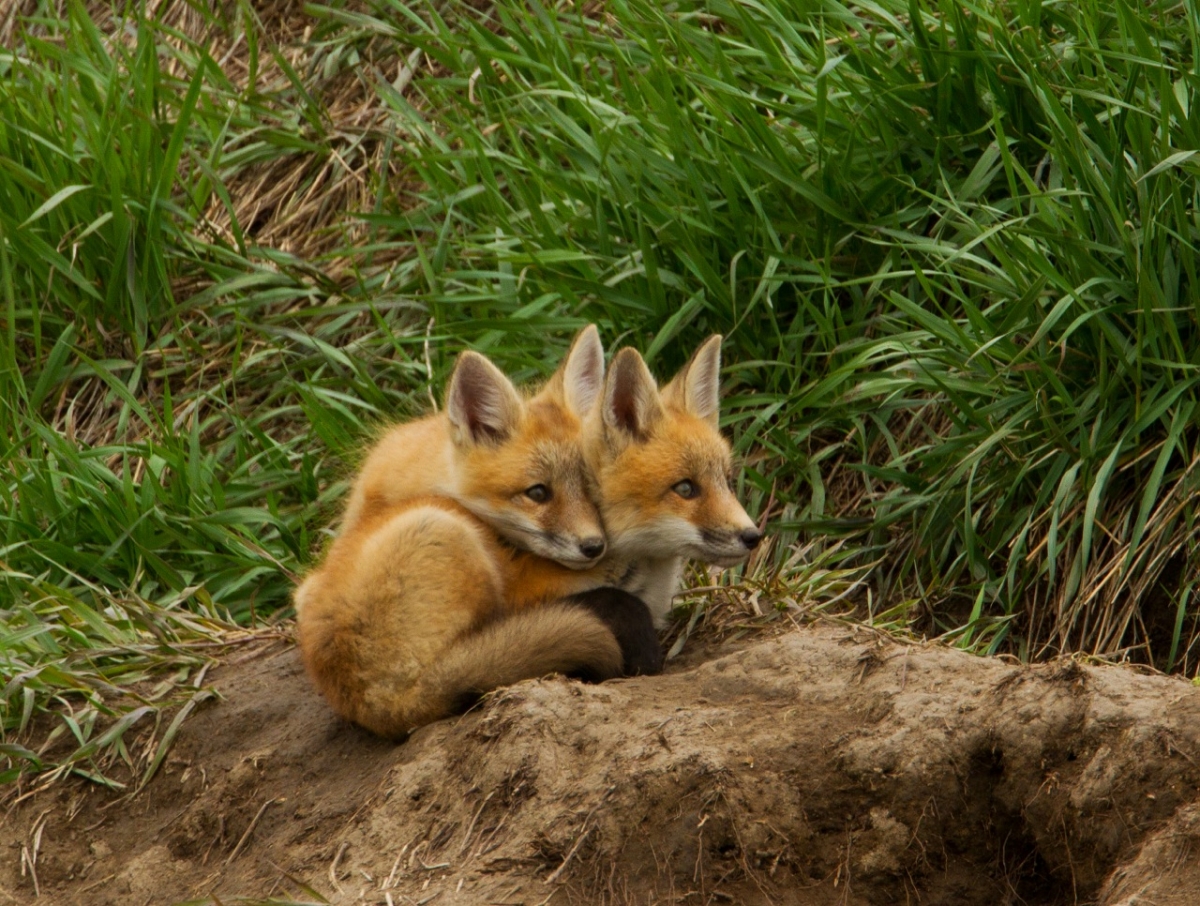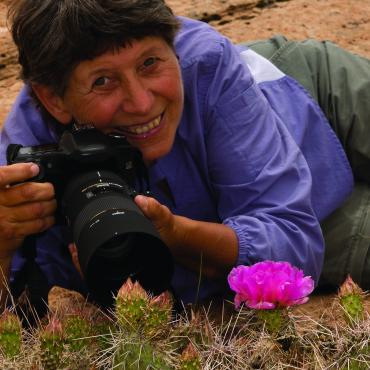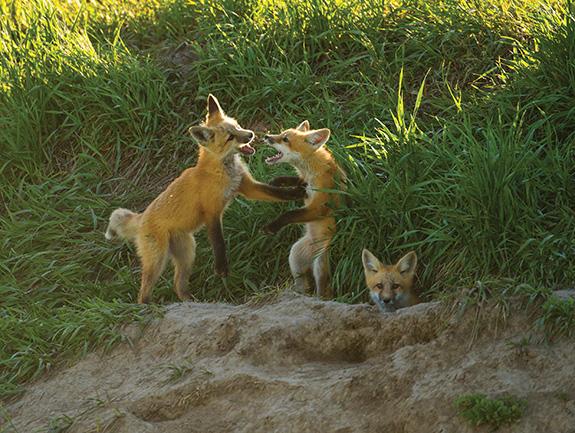On the Sly
Capturing the kits at play.
It’s late spring, the animated season of rejuvenation, when new life abounds amid a profusion of color. Buds burst open and birdsong fills the air. Baby animals, such as this lively fox litter I’ve discovered, enhance that seasonal spirit.
Their den is in an open area 200 yards from my vehicle. I carry my 500mm lens and tripod, not caring if they see me.
Patience is the key ingredient. No longer do I have a blind to hide behind. I sit in wet grass with bent knees and an aching back, embracing my short tripod in an uncomfortable position, waiting for an appearance. My approach is slow and I make it to within 60 yards of the playful kits who, when they first see me, scamper back into their hole.
Eventually, innocent eyes appear again… and then a second pair. At the sound of the shutter release, they’re on high alert, looking in my direction. My own muscles are taut with a stiff ache, but my discomfort is set aside as more kits appear when the others ignore my presence. Rearing up on hind legs, they place their forelegs on each other’s chests and push to establish dominance.
Over the next three weeks, the hierarchy among the siblings keeps re-establishing itself, deciding who is currently in command.

Many mornings are unprofitable as no kits appear. When they do appear, they give me 60 minutes of playtime and numerous action shots. In learning wildlife behaviors, I’ve discovered that a shutter-speed priority of 1/1000th of a second (or greater) is a must in capturing tack-sharp images—in other words, it needs to be fast to eliminate motion blur.
After about nine weeks, the dominant kit bolts from the den and disappears in the vast world beyond—it’s time to become a fox. As the others grow bigger and bolder, they too vanish.
Carol Polich is a wildlife photographer based in Bozeman and teaches photography classes through Bozeman Adult Community Education.












